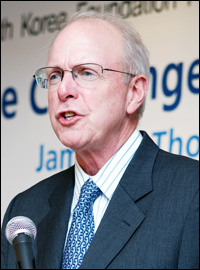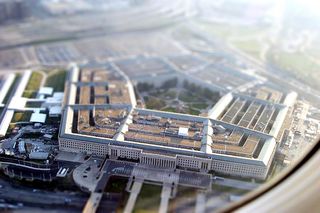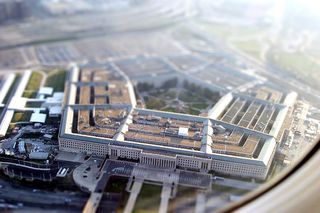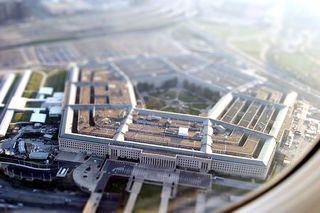Paul Baran, who helped develop the building blocks of the Internet during the 1960s while working as a researcher at the RAND Corporation, died March 26 at his home in Palo Alto, Calif., from complications relating to lung cancer. He was 84.
RAND colleagues remembered Baran as a friendly and brilliant scientist who cared as much about the application of technology as he did about its development.
"Our world is a better place for the technologies Paul Baran invented and developed, and also because of his consistent concern with appropriate public policies for their use," said James A. Thomson, president and CEO of RAND. "Paul believed that much of the future is shaped by the development of technology and that it was quite appropriate that a lot of engineers and scientists be a part of an institution that's concerned with the future of public policy."
Baran left RAND in 1968, but he remained an active supporter of the non-profit, non-partisan research organization and the RAND Alumni Association. He frequently attended public policy forums and other events at RAND.
Natalie Crawford, a RAND senior fellow, recalled Baran as "a true visionary" who made some startlingly prescient predictions in a 1968 RAND report about how people would use the computer at home and for commerce.
"He was a kind and very humble man," she said. "He was a great mentor. He didn't care about who got credit. When he visited RAND in the summer of 2009 and presented a seminar to the Alumni Association on his work that led to packet switching, he said a lot of people contributed in important ways to this discovery, that it wasn't his alone. And then he closed with the quote: "If you see a frog sitting on top of a flag pole, you know it didn't get up there by itself." That typified Paul. We are all fortunate to have benefitted from Paul's many contributions and his friendship over the years, but he will be sorely missed."
Baran was born in Poland on April 28, 1926. In 1928, his family moved to the United States. He attended Drexel Institute of Technology (now Drexel University), where he earned a degree in electrical engineering in 1949. He went to work for Eckert-Mauchly Computer Corporation in Philadelphia, testing parts of radio tubes for an early commercial computer, the Univac.
He was married to Evelyn Murphy in 1955 and moved to Los Angeles, where he worked for the Hughes Aircraft Company. Taking night classes at UCLA, he earned a master's degree in engineering and joined the computer science department at the RAND Corporation in 1959.
Willis Ware, a retired RAND researcher, was chairman of the computer science department at RAND during Baran's tenure and said what he remembered most about his colleague was "his patience in dealing with people who didn't believe in his work — like AT&T [in the 1960s]. I think nobody really appreciated the importance of his work at the time."
At that time, RAND focused mostly on Cold War-related military issues. A looming concern was that neither the long-distance telephone network nor the basic military command-and-control system would survive a nuclear attack. Although most of the links would be undamaged, the centralized switching facilities would be destroyed by enemy weapons. Consequently, Baran conceived a system that had no centralized switches and could operate even if many of its links and switching nodes had been destroyed.
Baran envisioned a network of unmanned nodes that would act as switches, routing information from one node to another to their final destinations. The nodes would use a scheme Baran called "hot-potato routing" or distributed communications.
Baran also developed the concept of dividing information into "message blocks" before sending them out across the network. Each block would be sent separately and rejoined into a whole when they were received at their destination. The British computer scientist Donald Davies independently devised a similar system, but he called the message blocks "packets," a term that was eventually adopted instead of Baran's message blocks. The technology is known today as "packet switching."
In 1969, this distributed concept underwent its first large-scale test, with the first node installed at UCLA and the seventh node at RAND in Santa Monica. Funded by the Advanced Research Projects Agency and called ARPANET, it was intended for scientists and researchers who wanted to share one another's computers remotely. Within two years, however, the network's users had turned it into something unforeseen: a high-speed, electronic post office for exchanging everything from technical to personal information.
In 1983, the rapidly expanding network broke off from its military part, which became MILNET. The remainder became what was called ARPANET. In 1989, the ARPANET moniker was retired in favor of the "Internet," which had also been described as the "information superhighway."
Baran left RAND in 1968 to co-found the Institute for the Future, a nonprofit research group specializing in long-range forecasting. He also started seven companies, five of which eventually became publicly-traded companies.
Baran's papers will be donated to Stanford University, according to his family.
Baran's wife, Evelyn, died in 2007. He is survived by his son and daughter-in-law, David and Jane Baran of Atherton, Calif.; three grandchildren; and his companion, Ruth Rothman.














Recent Comments